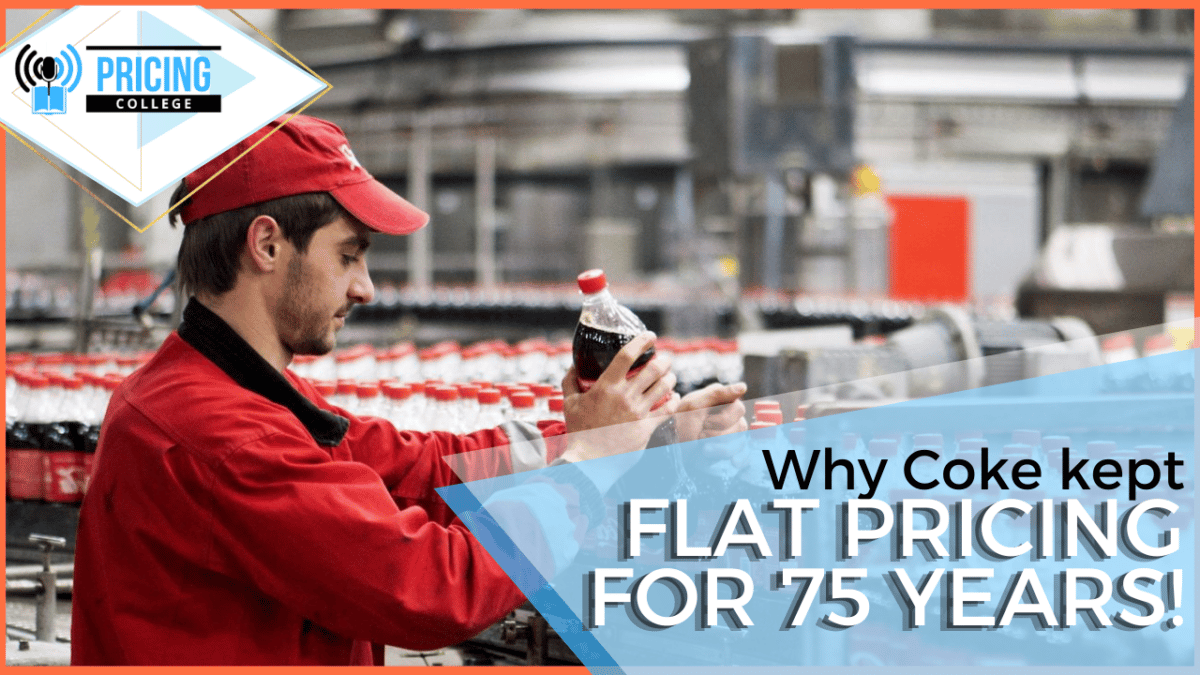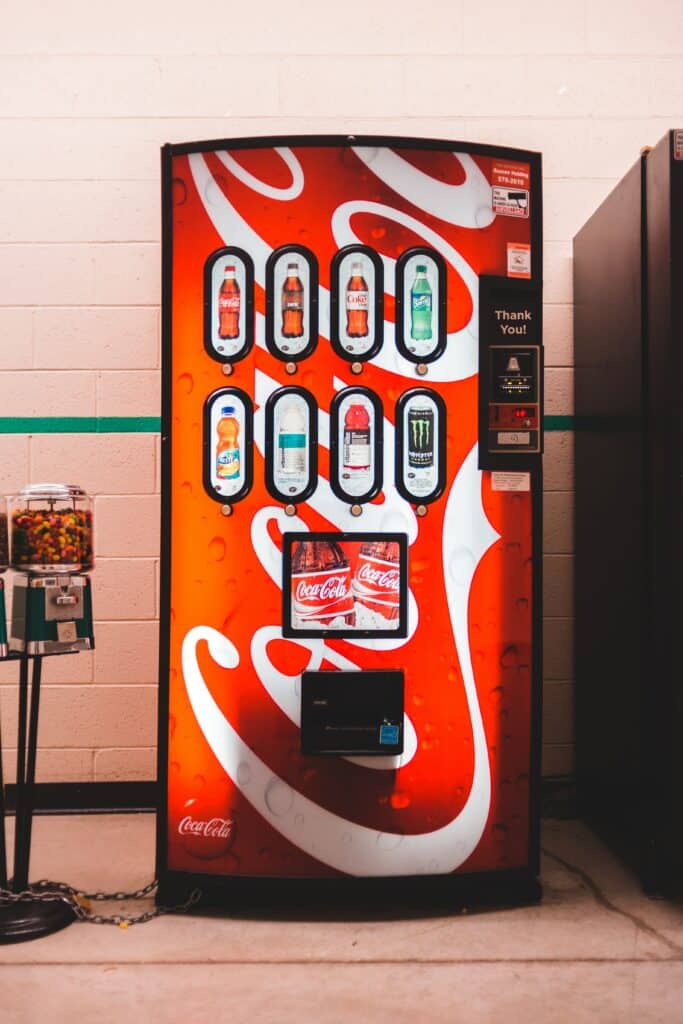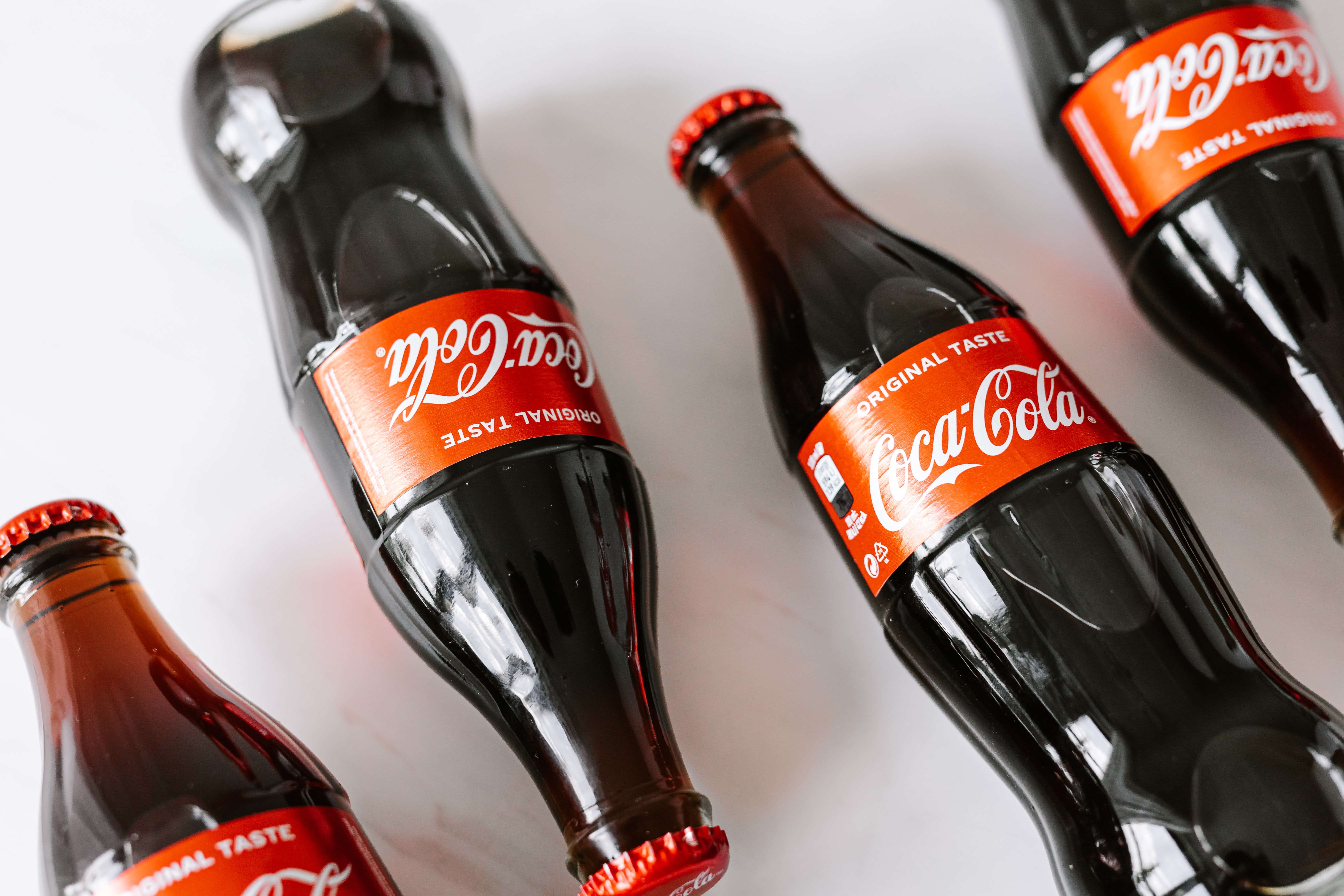
Why Coke Kept Flat Pricing for 75 years! 🏷 Podcast Ep. 44
In this episode of Pricing College – we discuss why Coca Cola did not increase their pricing (Coke flat pricing) for almost 75 years.
This goes against the common perception of Coke as a business with great pricing power – that can command higher prices.
We dig into the reasons behind this surprising fact.
Listen on Apple Podcasts Listen on Spotify Listen on Google Podcasts Listen on Stitcher Listen on Amazon Music
TIME-STAMPED SHOW NOTES
[00:00] Introduction
[01:24] How does Coke flat pricing start?
[02:17] Joanna discuss the key issues in Coke during the early days
[03:15] Number of reasons why coke flat pricing kept for a long period of time
[05:25] Different methods were used to try to increase the prices and escape Coke flat pricing
[06:46] Coke transition from the fountain into bottling and distributors system
[07:58] Do Coca-cola plan to move back to fountains?
How does coke flat pricing start?
In the last podcast, we discussed an interesting case study with Coke and we just wanted to extend that a case study with Coca Cola. Because it’s a company that when you think about, it’s a huge global brand, it’s got amazing pricing power, it shifted so much volume at different price points.
But, did you know that in the early days they found it incredibly difficult to increase the price?
In fact, they didn’t increase the price of coke for about 75 years. So we just wanted to explain some of the challenges they had. We think it’s closely aligned with a lot of businesses because people commonly say… “ it’s difficult to increase prices”.
Now we just wanted to talk through this Coca Cola case study to show you some of their challenges and how they got through those pricing issues.
I suppose when we talked about a company that doesn’t increase prices at all for 75 years. Maybe we can say they didn’t get through those pricing challenges.
I suppose it’s very interesting considering that Warren Buffett, the famous Ambassador always talks about Coca Cola and their pricing power and their pricing moat.
But I think from the period of like 1875 to roughly 1950 in the United States, where Coca Cola was pretty much only sold in the United States. And it was growing into the major brand we know today.
The price of a serving of Coca Cola was stuck at a nickel.
Which is to my understandings I’m not American roughly is five cents at peace. So at that period of time, you would buy a serving of Coca Cola either from a vending machine. Like a primitive version of what we know today. Or, in a fountain where you fill up a cup within a set amount, and five cents or nickel was the flat price.
In the early days, they’re quite conscious of how people consumed that product.
They weren’t quite sure whether people would take to drinking coke in a bottle though they’re used to drinking Coke from a fountain taking as much as they wanted. They weren’t sure as well once consumers got used to drinking Coke from a bottle whether they’d be interested in paying more just for having a coke in a bottle.
There are lots of issues about how people consumed coke, in what quantity. And still, these very issues are top of mind for Coke and Pepsi and like…
- How do people consume coke, drinks and snacks?
- what do they eat and drink with coke?
These are all very key issues when in regards to bundling, price tiers and the whole lot.
Several reasons why coke flat pricing kept for a long period of time
There’s a lot of marketing around. And there are a number of reasons why the price didn’t change from nickel over that incredibly long period of time.
I think we need to point out that in that period in American history inflation was much lower than what it has been in recent years from the 70s.
So, price stability was more possible to maintain. There are legal issues around the bottling contract and things like that which we’re not covered in this podcast. We’ll get more into the mechanics of it.
But one of the big things, it was the marketing, of course, promoting your Coke was a nickel.
And people use to that, whether you were a kid or you’re family buying a drink. When we get into the actual vending machines, we have to bear in mind that at this point in time vending machines were not able to give change. You had to submit the exact amount of coin required to purchase the drink, and that was a nickel.
Obviously, if the technology at that time is what is as it is. Coke doesn’t have the ability to create a new modern electronic technology that doesn’t come on board for you know another 20 or 30 years.
Fundamentally, they cannot increase prices unless they double. Because the coins are nickel. The next size up is another nickel. If you want to push to a price rise is you have to double the price of the can.

This is something that companies are experiencing now with vending machines.
A lot of people don’t carry coins at all and cash around with them. And sales at vending machines have gone down as a consequence. Now what you’re seeing is a lot more vending machines having those card swiping devices pushed on them. Just so it’s easier for people to buy.
Have prices gone up with that? I don’t know over time we’ll see probably marginally is a purchase cost of improving the vending machines.
Similar issues today as coke experience with a vending machine, and changing the currency people were used to paying for it with just a nickel. Coke wasn’t sure whether they should change. Because they thought consumers were sensitive to those sorts of things and would stop buying.
Attempts and methods used to escape coke flat pricing
I supposed once time started passing and the price comes noticeably at the price that they’re selling at inflation. Adjusted terms was becoming quite different. Coca Cola did attempt a couple of methods to try and increase prices, one way or another.
And I suppose bear this in mind next time you’re a pricing management planning about the difficulty of pushing through a price rise. Just be thankful you’re not Coca Cola in the 1940s.
1. The first thing they did was they considered putting in blank or empty bottles in the machine.
So every ninth time you bought a Coke, they will come out empty. As you can understand or imagine this wasn’t that popular with consumers, especially with kids. When you go to buy a drink and every once in a while you’re playing a reverse roulette system where you lose, so that was phased out.
2. Then the next one was they even tried to lobby the US Treasury in Washington to mint new coins.
They wanted them to mint, either a six cents or a seven cent 50 coin. The lobbying part of Coca-cola is very powerful. I’m not sure if it was as powerful back then as it would be today, but the Treasury did say no to that.
But that was the extent that they were trying to push through this price raising. This thing only adjusted itself when in the 1950s when technology came on board and enabled them to give change.
I suppose from then they’re able to sort of track how people bought from vending machines different areas, different regions.
Whether they should discontinue the fountain. And just put more money into bottling and the distributors’ system. Then from there, you see what we’ve got today.
The ability to increase prices based on location, geography, and product type. There aren’t as many constraints as they were after all of those different sorts of fiscal, logistical and operational issues were removed from the equation.
That is so interesting that they thought, after thinking about the consumer so much at the beginning. And how they consumed their product that they would take away one in nine bottles. That would, in turn, affect your brand reputation and price positioning in the market. People would inevitably not trust a company that did that. So, no wonder they stopped that strategy, not a good one.

Bottomline: Is Coke moving back to the fountain concept?
I think this is a real example of the peripheral values of products can be very different to the drink itself. And also the technology and the delivery of a product to get it into your hand can influence things.
In this example, we’ve moved from the mechanical era to more of the information technology era. One of the more interesting things also is, I was watching a video recently about Coca Cola development plans and how they’re moving forward. This was before the entire Coronavirus thing and that may influence stuff.
But they’re big trends we’re moving back to fountains.
You’ll see these on sort of cruise ships again before Corona. And also in theme parks where you get a cup and then you can fill it with the drink you want. You’re not buying a can or a bottle but the fountain is filling your drinks.
With that, there were a lot more options for flavours, mixing flavours varieties, etc. So you’re having non-uniform products. It was making much more tailored products to your individual needs.
This is obviously something that people back in the 1940s and I couldn’t even imagine.
Interesting that they’re going back to fountains when we discussed the issue of shrink inflation.
And diet becoming an issue for consumers today and a key factor in purchase decisions. The fountain concept is pushing bigger sizes. And drinking more in volume in a world that is going to smaller sizes and thinking about health well being.
That’s it for me. It is getting warm so I’m pretty sure I’ll be consuming more Coca Cola in the next few days. And yeah, I’ve made sure I’ve got the change in my pocket or the card. Exactly.
For a comprehensive view on building a great pricing team to prevent loss in revenue,
Download a complimentary whitepaper on How to Build Hiring Capability To Get The Best Pricing Team
〉〉〉 Contact Us for a FREE Consultation〉〉〉
Related Posts
Leave a Reply Cancel reply
Categories
- marketing strategy (26)
- Organisational Design (14)
- Podcast (114)
- Pricing Capability (87)
- Pricing Career Advice (10)
- Pricing Recruitment (19)
- Pricing Strategy (290)
- Pricing Team Skills (13)
- Pricing Teams & Culture (24)
- Pricing Transformation (47)
- Revenue Model (25)
- Sales Effectiveness (27)
- Talent Management (7)
- Technical Pricing Skills (35)





